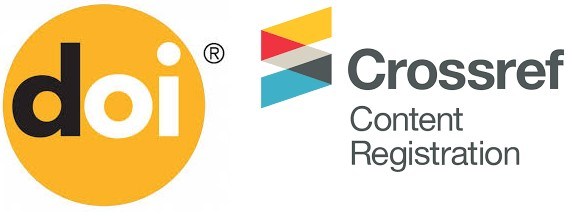Interdisciplinarity in Mathematics Education – Genuine features of academic interdisciplinary practice
DOI:
https://doi.org/10.46219/rechiem.v14i2.104Keywords:
Mathematical modelling, Interdisciplinarity, Mathematical modellersAbstract
When the purpose of Mathematics Education is to enrich the understanding of reality, efforts to innovate invite us to recognize mathematics beyond its traditional and abstract sense, establishing objectives that cross disciplinary boundaries to understand and explain the student's reality and, therefore, model environments of interest. This article establece as the central problem the search for components that characterize what an interdisciplinary task means when the problem requires mathematical models for its realization in genuine environments. To this end, a scenario is analyzed in which mathematical models emerge, such as interdisciplinary work between mathematical modellers and specialists in other disciplines in context. Using a qualitative approach, seminars in the area were analyzed over two semesters, identifying as results the existence of components necessary for the realization of interdisciplinary academic practices, and discussing the coherent intersection between such identified components and the characteristics of the initial tasks.
Downloads
References
Aravena, M., Rodríguez, M., y Barría, L. (2020). Caracterización de las habilidades STEM en procesos de etnomodelado con alumnos/as trabajadores/as migrantes haitianos/as de la ciudad de Talca. Estudios Pedagógicos, XLVI(2), 397–419. https://doi.org/10.4067/S0718-07052020000200397
Arrieta, J., y Díaz, L. (2016). Investigaciones Latinoamericanas en Modelación – Matemática Educativa. Gedisa.
Belzen, A., Krüger, D., y Driel, J. (Eds.). (2019). Towards a Competence-Based View on Models and Modeling in Science Education. Springer.
Blum, W., y Leiß, D. (2007). How do teachers deal with modeling problems? En C. Haines, P. Galbraith, W. Blum, y S. Khan (Eds.), Mathematical modeling (ICTMA 12): education, engineering and economics (pp. 222–231). Horwood. https://doi.org/10.1533/9780857099419.5.221
Borromeo-Ferri, R. (2019). Educación interdisciplinaria en la escuela – ejemplos y experiencias. UCMaule, (57), 25-37. https://doi.org/10.29035/ucmaule.57.25
Braun, V., y Clarke, V. (2006). Using thematic analysis in psychology. Qualitative Research in Psychology, 3, 77–101. https://doi.org/10.1191/1478088706qp063oa
Cabrera-Baquedano, A., Huincahue, J., y Gaete-Peralta, C. (aceptado). Tránsitos al ajustar modelos matemáticos interdisciplinares: el caso de la alfabetización financiera. Uniciencia.
Cordero, F. (2016). Modelación, funcionalidad y multidisciplinariedad: el eslabón de la matemática y el cotidiano. En J. Arrieta, y L. Díaz (Coords.), Investigaciones Latinoamericanas en Modelación – Matemática Educativa (pp. 59-88). Gedisa.
Cordero, F., Gómez, K., Silva-Crocci, H., y Soto, D. (2015). El discurso matemático escolar: la adherencia, la exclusión y la opacidad. Gedisa.
Flores-Fuentes, G., y Juárez-Ruiz, E. (2017). Aprendizaje basado en proyectos para el desarrollo de competencias matemáticas en bachillerato. Revista Electrónica de Investigación Educativa, 19(3), 71–91. https://doi.org/10.24320/redie.2017.19.3.721
Frejd, P., y Bergsten, C. (2016). Mathematical modelling as a professional task. Educational Studies in Mathematics, 91, 11–35. https://doi.org/10.1007/s10649-015-9654-7
Frejd, P., y Bergsten, C. (2018). Professional modellers’ conceptions of the notion of mathematical modelling: ideas for education. ZDM – The International Journal on Mathematics Education, 50(1), 117–127. https://doi.org/10.1007/s11858-018-0928-2
Huincahue, J. (2021). Interdisciplina en Educación Matemática y su razón de ser. En D. M. Gómez, C. Cornejo, y M. V. Martínez (Eds.), Actas de las XXV Jornadas Nacionales de Educación Matemática (pp. 36-43). Universidad de O’Higgins.
Huincahue, J y Vilches, K. (2019). Interdisciplinarity, mathematical modelling and Poincare’s work: comparing conceptions about knowledge construction. Journal of Physics: Conference series, 1160, 012009.
Huincahue, J., Borromeo-Ferri, R., Reyes-Santander, P., y Garrido-Véliz, V. (2021). Mathematical Thinking Styles – the advantage of analytic thinkers when learning mathematics. Education Sciences, 11(6), 289. https://doi.org/10.3390/educsci11060289
Huincahue, J., y Vilches, K. (2019). Interdisciplinarity, mathematical modelling and Poincare’s work: comparing conceptions about knowledge construction. Journal of Physics: Conference series, 1160, 012009. https://doi.org/10.1088/1742-6596/1160/1/012009
Kaiser, G. (2005). Mathematical modelling in school. Examples and experiences. En H. W. Henn, y G. Kaiser (Eds.), Mathematikunterricht im Spannungsfeld von Evolution und Evaluation. Festband für Werner Blum (pp. 99-108). Franzbecker.
Klein, J. T. (2013). Communication and collaboration in interdisciplinary research. En M. O’Rourke, S. Crowley, S. D. Eigenbrode, y J. D. Wulfhorst (Eds.), Enhancing Communication & Collaboration in Crossdisciplinary Research (pp. 11-30). Sage.
Lagrange, J-B., Huincahue, J., y Psycharis, G. (2022). Modeling in education: new perspectives opened by the theory of mathematical working spaces. En A. Kuzniak, E. Montoya-Delgadillo, y P. Richard (Eds.), Mathematical work in educational context - The perspective of the Theory of Mathematical Working Spaces (pp. 247–266), Springer. https://doi.org/10.1007/978-3-030-90850-8_11
Lesh, R., y Doerr, H. (Eds.). (2003). Beyond constructivism – Models and modeling perspective on mathematics problem solving, learning and teaching. Lawrence Erlbaum. https://doi.org/10.4324/9781410607713
Ministerio de Educación. (2021). Matemática. Currículum Nacional. https://www.curriculumnacional.cl/portal/Educacion-General/Matematica/
Passmore, C., Svoboda Gouvea, J., y Giere, R. (2014). Models in science and in learning science. En M. Matthews (Ed.), International handbook of research in history, philosophy and science teaching (pp. 1171–1202). Springer. https://doi.org/10.1007/978-94-007-7654-8_36
Stillman, G. (2019). Preface. En G. A. Stillman, y J. P. Brown (Eds.), Lines of Inquiry in Mathematical Modelling Research in Education (pp. v–vii). Springer. https://doi.org/10.1007/978-3-030-14931-4
Stillman, G., y Brown, J. (2019). Lines of Inquiry in Mathematical Modelling Research in Education. Springer. https://doi.org/10.1007/978-3-030-14931-4
Velten, K. (2009). Mathematical modeling and simulation. Introduction for scientists and engineers. WILEY-VCH Verlag GmbH & Co. KGaA. https://doi.org/10.1002/9783527627608
Wake, G. (2015). Preparing for workplace numeracy: A modeling perspective. ZDM Mathematics Education, 47(4), 675–689. https://doi.org/10.1007/s11858-015-0704-5
Williams, J., Roth, W-M., Swanson, D., Doig, B., Groves, S., Omuvwie, M., Borromeo-Ferri, R., y Mousoulides, N. (2016). Interdisciplinary Mathematics Education A State of the Art. Springer. https://doi.org/10.1007/978-3-319-42267-1_1
Downloads
Published
How to Cite
Issue
Section
License
Copyright (c) 2022 Revista Chilena de Educación Matemática

This work is licensed under a Creative Commons Attribution 4.0 International License.











